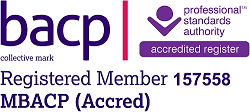
Blogs and self-help guides
Well-being articles and tips
Welcome to my therapy blog, a space dedicated to supporting your personal development and overall well-being. Here, you’ll find a variety of articles and tips on topics such as journaling, self-care, and mental health. Whether you’re navigating student life, curious about online therapy, or seeking guidance on grief and bereavement support, this blog covers a range of helpful resources.
Explore sections on seasonal self-care, journaling prompts for well-being, guides for student-related challenges and information relating to grief. I also offer insight into therapy, including whether online sessions are a good fit and about speaking to a therapist is different to talking with a friend.
My goal is to provide you with practical tools and information to enhance your well-being, wherever you are on your journey.
Journaling guides and ideas
Journaling can be a powerful tool for navigating challenges, calming intense emotions, boosting self-awareness, and building resilience. Whether you're a seasoned journaler or just starting out, these blogs provide a variety of techniques, prompts, and creative ideas to enrich your journaling practice:
Well-being tips
For practical self-help articles aimed at enhancing your well-being, explore the following blogs. You'll find a variety of topics, including managing loneliness, the connection between nature and mental health, and handling anger. Each blog offers helpful self-care techniques, reflective questions, and effective coping strategies:
Students
Student life can be demanding at times. Whether you're currently at university or preparing to start your journey, these blogs might offer valuable insights. They explore common challenges, like procrastination and exam stress, and provide practical tips for navigating them:
Seasonal self-care
As seasons change and holidays approach, new challenges can arise. These blogs provide guidance, reflective exercises, and practical tips to help you maintain your well-being year-round:
Grief & bereavement
Losing a loved one, whether a person or a cherished pet, can be an incredibly painful and isolating experience. These blogs provide guidance and support to help you or someone you know navigate the grieving process:
Therapy FAQ blogs
These articles dive deeper into common questions you may have about counselling, offering more detailed insights than the FAQ page. Topics include deciding if online counselling is right for you, how therapy differs from talking to a friend, and more:
How to harness the power of sound for well-being
Have you ever felt goosebumps while listening to a piece of music? Or noticed how certain songs can make you feel sad, uplifted or deeply moved?
Sound can have a remarkable ability to affect our emotions. It can stir up memories, soothe our minds, or inspire us.
This blog explores the impact of noise on our well-being and offers suggestions on how to tap into this powerful resource.....
Have you ever felt goosebumps while listening to music? Or have you noticed how certain songs can make you feel sad, uplifted or deeply moved?
Sound can have a remarkable ability to affect our emotions. It can stir up memories, soothe our minds, or inspire us. In a previous blog, I explored our responses to silence. Now I’d like to delve into its counterpart - the power of noise.
The emotional impact of sound
Music may improve our well-being through:
Catharsis - Music can be incredibly cathartic by helping us to connect and release difficult feelings like sadness, anger, or grief.
Connection - Certain songs might resonate deeply, making us feel less alone by reflecting on our own experiences. Lyrics or the melody of certain music might mirror what we’re going through.
Soothing us - Music can promote relaxation and calmness. However, what one person finds soothing might evoke different emotions in another. Our response to music is deeply personal, shaped by our tastes and life experiences. For some, classical music may be the ultimate relaxation tool, while others may find solace in the sounds of nature, like birdsong.
Energising us - Bright joyful music with strong beats can feel energising and uplifting. You might find your food tapping, your body swaying, and maybe even feel the urge to grab your running or gym shoes and do a workout.
Reminiscing - Music can trigger significant memories that are joyful. On the other hand, it may bring up unresolved memories that trigger grief and sadness and allow us the opportunity to work through them or seek help to do so.
Sounds and music for sleep issues
If you struggle to drift off to sleep due to a busy mind, environmental noises, or discomfort, you might find sound a useful tool.
Here are some options you may want to consider:
Gentle music - Music tracks for drifting off usually need to be of a consistent volume with short or no gaps between tracks. You might already have such music on your playlist but there are also specially composed tracks designed to lull you off to sleep.
Sleep stories - These not only provide a soothing background noise but can also help shift your focus from distractions to a calming narrative.
Coloured noise - Coloured noise, like white noise, is often used to mask environmental noise and some people find calming. White noise, which is made up of all the frequencies the human ear can hear, is the most well-known and sounds like the static of an untuned radio. You can find coloured noises on apps, for download, white noise generators, or even by running a simple room fan.
When using sound to mask noise, be careful not to turn up the volume too high. It’s important to stay within safe noise limits to protect your hearing.
There are a variety of resources that offer sounds for sleep. The Calm app is one I personally enjoy, it has a wide variety of sleep stories and music for relaxation and sleep.
Take a sound bath
For centuries, people have turned to sound when looking for healing on a physical and emotional level. Instruments such as drums, Tibetan singing bowls, and the human voice have all played a role.
Over the last several years, Sound Baths have risen in popularity. Despite the name, no water is involved for the participants - instead, you are “bathed” in soundwaves. During a sound bath, you either sit or lie down, while a variety of instruments, often including gongs and singing bowls, are played. These sounds are believed to promote a meditative state by shifting our brain’s rhythm, leading to deeper physical and psychological relaxation and making us more receptive to personal insights.
How to Tap into the Power of Music for Your Well-Being
If you want to add music to your well-being toolkit here are some suggestions:
Create playlists - Curate different playlists for different emotions, like one for sadness, one for anger, and one for relaxation. Listen to these as and when you need them. For example, if you experience sadness but it feels stuck, a compilation of sad songs may release this, or if you feel stressed you may be soothed by a ‘relaxation’ playlist.
Music on random selection - Listen to songs on shuffle and notice how each piece affects your mood and thoughts. Consider journaling your experiences;
Reflect on any negative reactions - If you dislike a specific piece of music reflect on your reasons for this. Pay attention to your physical reactions, your thoughts and emotions in response to that piece. Sometimes music can bring suppressed issues to the surface.
Reflect on any positive reactions - If you love a piece of music or it provokes positive feelings reflect on what it is about this music you enjoy. Using a journal for reflection can sometimes be useful.
Bang a drum - If you don’t have a drum use a pan and wooden spoon. Notice how you play - Do you hit it hard or tap it gently? Is your rhythm steady or does it vary? Do you use a fast or slow rhythm or a mixture of the two? What thoughts and emotions come up as you drum.
Attend a sound bath - Experience a sound bath first-hand.
Sing, hum, whistle or play a woodwind instrument - You don’t need to be good at these things to benefit from them. These activities require us to extend our exhale, which can have a soothing effect and promote a sense of calm.
Meditation - Certain meditation techniques involve the use of sound. For example, the chanting of mantras or using environmental sounds as a focus of the meditation.
Non-jarring alarm clock - Waking to the sudden shock of a blaring alarm can leave many of us feeling stressed before we’re even out of bed. If you’re after a more gentle and positive way to start your day you might want to look for an alarm that starts quietly and slowly builds in volume. Also, find a sound that feels positive to you, that might be a recording of nature’s dawn chorus, the rolling waves of the sea or a motivational song.
Final Thoughts
Music and sound have the potential to profoundly impact our well-being, from evoking deep emotions and memories to promoting relaxation and sleep.
In this blog I offer suggestions for incorporating music into your self-care routine, including creating playlists, reflecting on your reactions to music, and engaging in musical activities like drumming and singing. Many of us start our day with an alarm to wake us and we can choose a sound to wake us gently rather than begin our day to the shock of a blaring alarm.
Music and sound can be a powerful tool that helps us connect with our inner world or express how we feel when words fail.
I will end with a quote by Plato:
Music gives a soul to the universe, wings to the mind, flight to the imagination, and life to everything
Counselling
If you find music and sound bringing up unresolved issues or you’re struggling to cope with some other difficulty, counselling might be helpful. I offer face-to-face, online and telephone appointments.








































